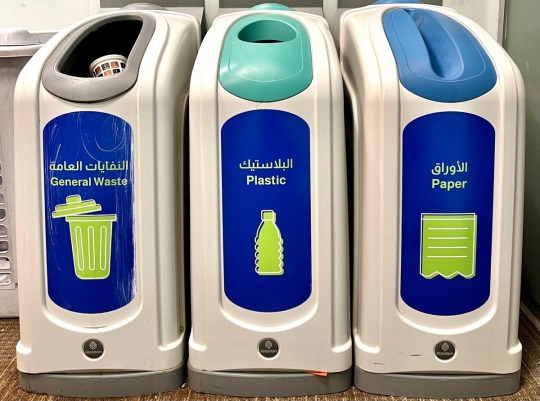#Environmentally Friendly Practices
Explore tagged Tumblr posts
Text
Note to Self: Do It Better Every Day!
“The Struggling Servant” was my first blog post about being eco-friendly, a facet of sustainability. It was written in 2011 and one of the inspirations behind that dates back to my university days. I owe the mountaineering group’s bulletin board from my university; the mountains I scaled; the LM’s minimalism approach; and friends from the then Sabit-Sabit Mountaineers group that I was a part of…

View On WordPress
#Climate Change Initiatives#Environmentally Friendly Practices#Hiking#Leave No Trace#Leave No Trave#Stop Global Warming#Sustainability#Sustainability Matters#Sustainable Fashion#Sustainable Living
3 notes
·
View notes
Text
#dirt2neat#cleaning service#Expert Carpet Technicians#Customized Cleaning Solutions#State-of-the-Art Equipmen#Environmentally Friendly Practices#Customer Satisfaction Guarantee
0 notes
Text
just got an envelope marked as "enviromail" that had. a single sheet of paper inside
2 notes
·
View notes
Note
I could probably ask google but i enjoy asking people more,
i keep seeing solar punk thrown around and not fully certain on what it is. Could you tell me, or atleast tell me where it started?
Im not entirely sure where it started, but it's basically a kind of environmental activism for the most part. It's basically trying to take care of the environment in any way you can and defy authority while doing it. Some common solarpunk activities include mending or making your own clothes, bartering, seedbombing (dropping native or edible seeds in public places for them to grow, roadsides are common), etc
#solarpunk#practical solarpunk#sustainable#environment#environmentalism#environmentally friendly#sustainability#ecofriendly#eco friendly#low waste
52 notes
·
View notes
Text

Explore the benefits of ecotourism and how it promotes sustainable travel. Discover how ecotourism supports conservation and local communities.
Do Visit: https://bharatvarshnaturefarms.com/the-benefits-of-ecotourism-sustainable/
#Ecotourism benefits#Sustainable travel practices#Environmental conservation tourism#Economic impact of ecotourism#Cultural preservation through tourism#Eco-friendly travel destinations#Responsible tourism initiatives#Community-based ecotourism#Sustainable tourism development#Educational ecotourism experiences
2 notes
·
View notes
Photo

Strive for Sustainable Style - YLF
#sustainability#environmentally friendly#vigilance#commitment#ethical practices#wardrobe#manageable#make a difference
10 notes
·
View notes
Text
Basalt Fiber Reinforcement in Construction: A Sustainable Paradigm Shift
Introduction In the contemporary construction landscape, a notable shift towards sustainable and eco-friendly building materials is underway. Among the alternatives gaining prominence is basalt fiber reinforcement, positioning itself as a compelling substitute for traditional steel reinforcement. This transition is fueled by a collective desire to reduce environmental impact and elevate the…

View On WordPress
#alternative to steel reinforcement#basalt fiber applications#basalt fiber properties#Basalt fiber reinforcement#basalt mesh in concrete#BFRP composites#construction industry sustainability#corrosion-resistant materials#durability in construction#eco-friendly building#environmental impact of construction#future of construction materials.#green building practices#lightweight construction materials#seismic resilience in buildings#steel replacement in construction#strength-to-weight ratio#Sustainable Construction Materials#sustainable structural design#thermal insulation in construction
2 notes
·
View notes
Text
Sustainable Living: Embracing the Cosmic Journey to a Thriving Planet
🌍 Join us on a cosmic journey toward a thriving planet! 🚀✨ Discover the power of sustainable living and its profound impact on our environment. From eco-friendly practices to renewable energy, green architecture, sustainable agriculture, circular economy, conservation efforts, corporate sustainability, and more, we explore practical tips and innovative solutions to create a positive cosmic impact. Let's nurture our planet for future generations! 🌱🌎 #SustainableLiving #RenewableEnergy #GreenArchitecture #CircularEconomy #Conservation #CorporateSustainability #CosmicImpact Together, we can make a difference and create a world where harmony and sustainability prevail. 🌟✨ #ThriveWithSustainability #PositiveCosmicChange
In a cosmic journey toward a sustainable future, we explore the transformative power of sustainable living and its profound impact on our planet. From eco-friendly practices to renewable energy and conscious consumption, we embark on a mission to nurture our planet for future generations. Join us as we delve into practical tips, inspiring stories, and innovative solutions that empower…

View On WordPress
#biodiversity#circular economy#climate change#conscious consumption#conservation#corporate sustainability#eco-friendly practices#education#environmental stewardship#green architecture#renewable energy#sustainable agriculture#sustainable communities#sustainable living
3 notes
·
View notes
Text

Unearthing the Power of Soil Remediation: A Promising Path towards Environmental Sustainability
The health of our planet is intricately linked to the quality of its soil, an aspect that is often overlooked. Soil pollution presents a significant environmental concern, affecting agricultural productivity, water quality, and ultimately, human health. However, the innovative field of soil remediation holds the key to reclaiming contaminated land and fostering a sustainable future.
Soil remediation, a sector of environmental science, focuses on purifying and revitalizing the soil. It encompasses various techniques to remove harmful pollutants, such as heavy metals, petroleum products, pesticides, and more, from contaminated soil. The ultimate aim is to restore the soil to a state where it can once again support healthy growth and biodiversity.
There are several methods of soil remediation, each tailored to the type and extent of soil contamination.
1. Excavation and Disposal
As a direct approach, this method involves physically removing the contaminated soil and disposing of it in designated landfills. Although it's an immediate solution, it merely transfers the contamination issue from one place to another, leading to concerns about its environmental sustainability.
2. Soil Washing
This technique uses water, sometimes mixed with other substances, to wash away contaminants. It's particularly effective for treating soils contaminated with heavy metals or certain kinds of organic pollutants. However, the process requires treatment of the resulting washwater to avoid secondary contamination.
3. Bioremediation
One of the most promising soil remediation strategies, bioremediation, employs natural processes to clean up contaminated soil. Specific microorganisms or plants (phytoremediation) are used to absorb, break down, or immobilize contaminants. This method is eco-friendly and holds great potential for large-scale applications.
4. Thermal Desorption
Thermal desorption involves heating soil to evaporate the pollutants, which are then collected and treated separately. This process is ideal for soils contaminated with volatile organic compounds, but it requires substantial energy input.
Soil remediation's significance extends far beyond environmental preservation. Healthy soil is critical for a functioning ecosystem, contributing to plant growth, water filtration, and climate regulation. Moreover, with the escalating global population, the need for arable land is at an all-time high. Through soil remediation, previously unusable land can be restored, strengthening food security and promoting sustainable land use.
Simultaneously, soil remediation helps protect groundwater resources. Soil acts as a natural filter, and contaminants present in the soil can leach into groundwater over time, posing serious health risks. By removing these pollutants, soil remediation safeguards our water supply.
In the grand scheme of climate change, soil remediation plays a pivotal role. Soil holds three times as much carbon as the atmosphere. Techniques like bioremediation not only remove contaminants but also improve soil health, increasing its capacity to store carbon and thereby helping to mitigate climate change.
In conclusion, soil remediation is not merely a sector of environmental science; it is a tool of hope for our planet. It embodies the mantra of "heal the soil, heal the planet," and underscores our responsibility to protect the environment. With continued research and technological advancements in soil remediation techniques, we can make strides towards a sustainable future.
Let's invest in soil remediation - for our health, for our food, and for our planet.
#Soil Remediation Techniques#Methods of Soil Remediation#Importance of Soil Remediation#Biological Soil Remediation#Chemical Soil Remediation#Thermal Soil Remediation#Soil Contamination Solutions#Future of Soil Remediation#Nanoremediation for Soil#Prevention of Soil Pollution#Soil Degradation and Remediation#Phytoremediation Techniques#Environmental Restoration Techniques#Soil Clean-up Methods#Soil Sustainability Practices#Eco-friendly Soil Remediation#Industrial Waste Soil Remediation#Soil Remediation Technologies#Innovations in Soil Remediation#Impact of Soil Remediation
2 notes
·
View notes
Text
Aerial View of Saruni Samburu Game Lodge. Do you like the Views? ❤

View On WordPress
#Aerial View of Saruni Samburu Game Lodge. Do you like the Views? ❤#and deep community ties#and Homestays Eco-friendly hotels#blending seamlessly into its arid surroundings#gazing at elephants roaming the Ewaso Nyiro River below#Guesthouses#Hotels#Kalama Conservancy#Kenya 🇰🇪❤🔥#learning about ancient traditions like beadwork and pastoralism . Fair Trade Crafts: Purchase hand-beaded jewelry and woven baskets directly#proves that luxury and environmental responsibility can coexist. As travelers increasingly seek stays that align with their values#remember: your stay here helps ensure future generations inherit a world as wild and wondrous as this one. Book thoughtfully#Saruni Samburu#Saruni Samburu Game Lodge offers more than breathtaking aerial views of the Samburu wilderness—it’s a blueprint for sustainable hospitality.#support communities#sustainable accommodations#this guide reveals how to identify accommodations like Saruni Samburu that prioritize the planet#transparent practices#tread lightly#waste reduction#with profits funding school scholarships . Did You Know? The lodge’s design uses traditional Samburu building techniques#with training programs empowering women as guides and managers . Cultural Preservation: Guests join elders for storytelling sessions under a#you protect the vistas you came to admire. As you sip sundowners on your private deck
0 notes
Text
Why I Let Go of My reMarkable Tablet and Embraced the iPad—For Good
It’s been nearly two years since I transitioned to the 2021 iPad as my major tool for a paperless working ecosystem. To this day, I take pride in championing the switch—not just for myself, but for my team as well. Going paperless wasn’t exactly a walk in the park—literally and figuratively. I’ve been swamped and couldn’t do the much of the grounding practices I need on a regular basis. Going…
#Digital Note-taking#eco-friendly#Environment#Environmentally Friendly Practices#Paper Free#Plastic Free#Recycling#Sustainability
0 notes
Text
Biodegradable Mulch Film Market to Reach USD 98.9 Billion by 2032, Driven by Sustainable Agriculture Practices
Introduction The global biodegradable mulch film market is experiencing a significant surge in demand, driven by the increasing focus on sustainable agricultural practices and environmental conservation. Valued at USD 51.5 billion in 2024, the market is projected to grow at a CAGR of 8.7% from 2025 to 2032, reaching a value of USD 98.9 billion by 2032. This growth reflects the rising adoption of biodegradable alternatives to conventional plastic mulch, particularly in organic and eco-conscious farming.

Growing Demand for Eco-Friendly Farming Inputs The use of traditional polyethylene mulch films has raised environmental concerns due to their persistence in the soil and challenges with disposal. In contrast, biodegradable mulch films decompose naturally in the soil after fulfilling their purpose, leaving no toxic residues. This quality is attracting farmers seeking environmentally responsible solutions that also improve crop productivity and soil health.
Supportive Government Regulations and Incentives Governments across the globe are implementing policies that promote the use of sustainable agricultural inputs. Subsidies for biodegradable products and restrictions on non-biodegradable plastics are encouraging farmers to switch to biodegradable mulch films. These regulatory trends are creating a fertile ground for market expansion in regions such as Europe, North America, and Asia-Pacific.
Enhanced Agricultural Yield and Soil Quality Biodegradable mulch films offer several agronomic benefits, including moisture retention, temperature regulation, and weed suppression. These properties lead to improved crop yields and more efficient use of water and fertilizers. Additionally, because the films degrade naturally, they eliminate the need for costly and labor-intensive removal processes, making them both eco-friendly and economically viable.
Innovation and Material Advancements Ongoing research and innovation in biodegradable materials—such as polylactic acid (PLA), starch-based polymers, and polyhydroxyalkanoates (PHA)—are enhancing the performance and affordability of mulch films. Manufacturers are investing in developing cost-effective and durable products tailored to different climatic and soil conditions, further driving adoption across diverse agricultural regions.
Challenges and Market Outlook While the benefits of biodegradable mulch films are clear, the market still faces challenges related to cost competitiveness compared to conventional plastic mulch and a lack of awareness among small-scale farmers. However, increasing education, expanding product availability, and long-term cost savings are expected to overcome these barriers in the coming years.
#biodegradable mulch film market#sustainable agriculture#eco-friendly farming inputs#biodegradable plastics in agriculture#biodegradable films for crops#mulch film market growth#environmental farming practices#organic farming solutions
0 notes
Text
#dirt2neat#carpet cleaning#Expert Carpet Technicians#Customized Cleaning Solutions#Environmentally Friendly Practices#Customer Satisfaction Guarantee
0 notes
Text
#Bastard Teak#Biodiversity#Eco-Friendly#Environmental Conservation#Forest Management#Renewable Resources#Sustainable Forestry#Sustainable Practices#Timber Industry
0 notes
Text
#Biodiversity#Deforestation Awareness#Eco-Friendly Practices#Environmental Conservation#Hardwood Benefits#Landscaping Ideas#Sustainable Forestry#Tree Care#Tropical Trees#West Indian Mahogany
0 notes
Text
Seeing Yellow: Celebrate the City Nature Challenge and Earth Month with a Splash of Sunshine

View On WordPress
#backyard nature#biodiversity#biodiversity monitoring#bumblebees#citizen nature challenge#citizen participation#Citizen Science#citizen scientists#City Nature Challenge#coltsfoot#Community Engagement#Community Science#dandelions#Earth day#Earth Month#Earth Month celebrations#eco-friendly nature activities#Eco-friendly Practices#eco-tourism#ecosystem documentation#ecosystem study#educational nature activities#environmental awareness#environmental challenges#environmental conservation#Environmental Education#environmental health#environmental stewardship#flower identification#Friends of the Saskatoon Afforestation Areas
0 notes